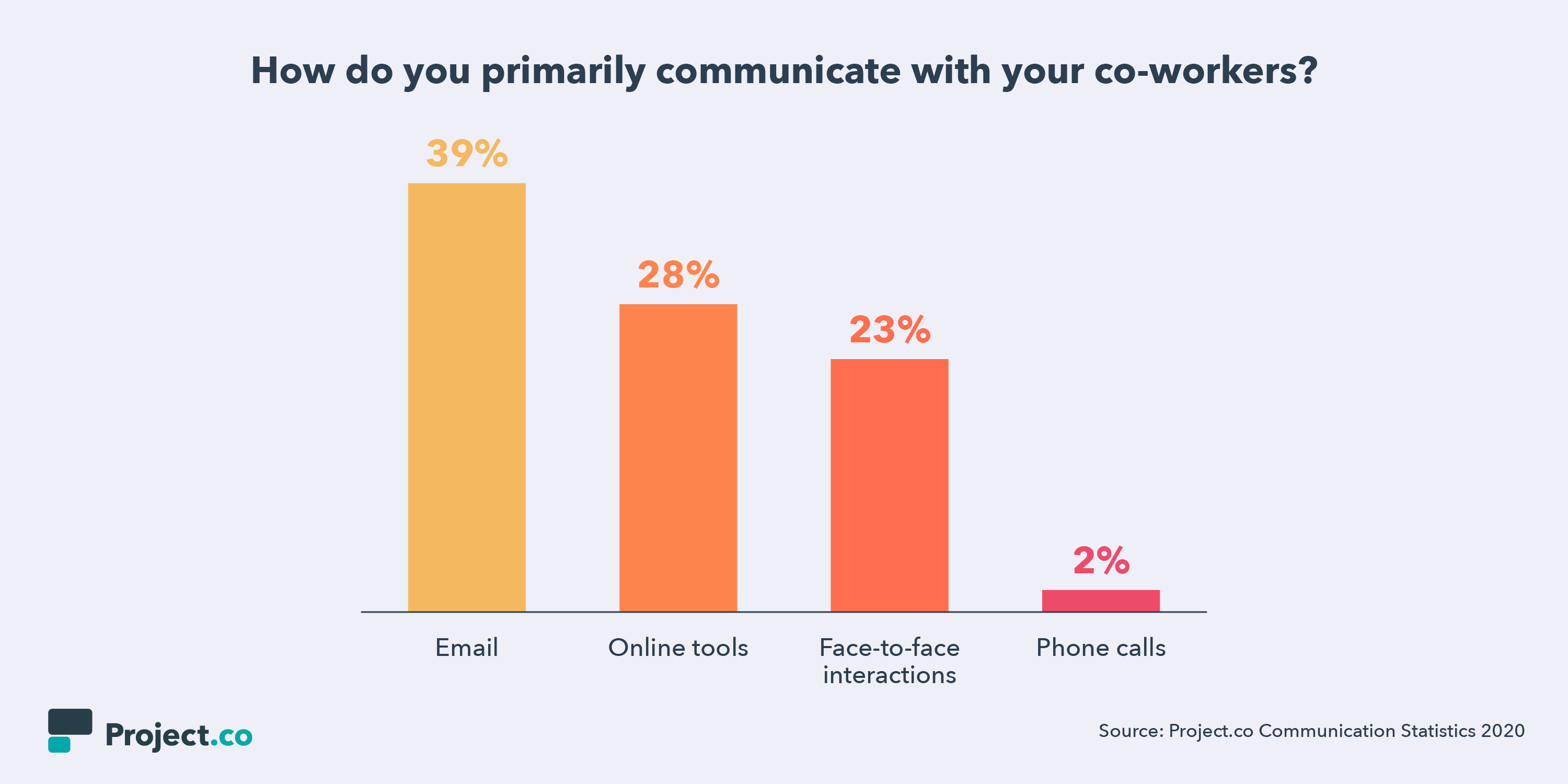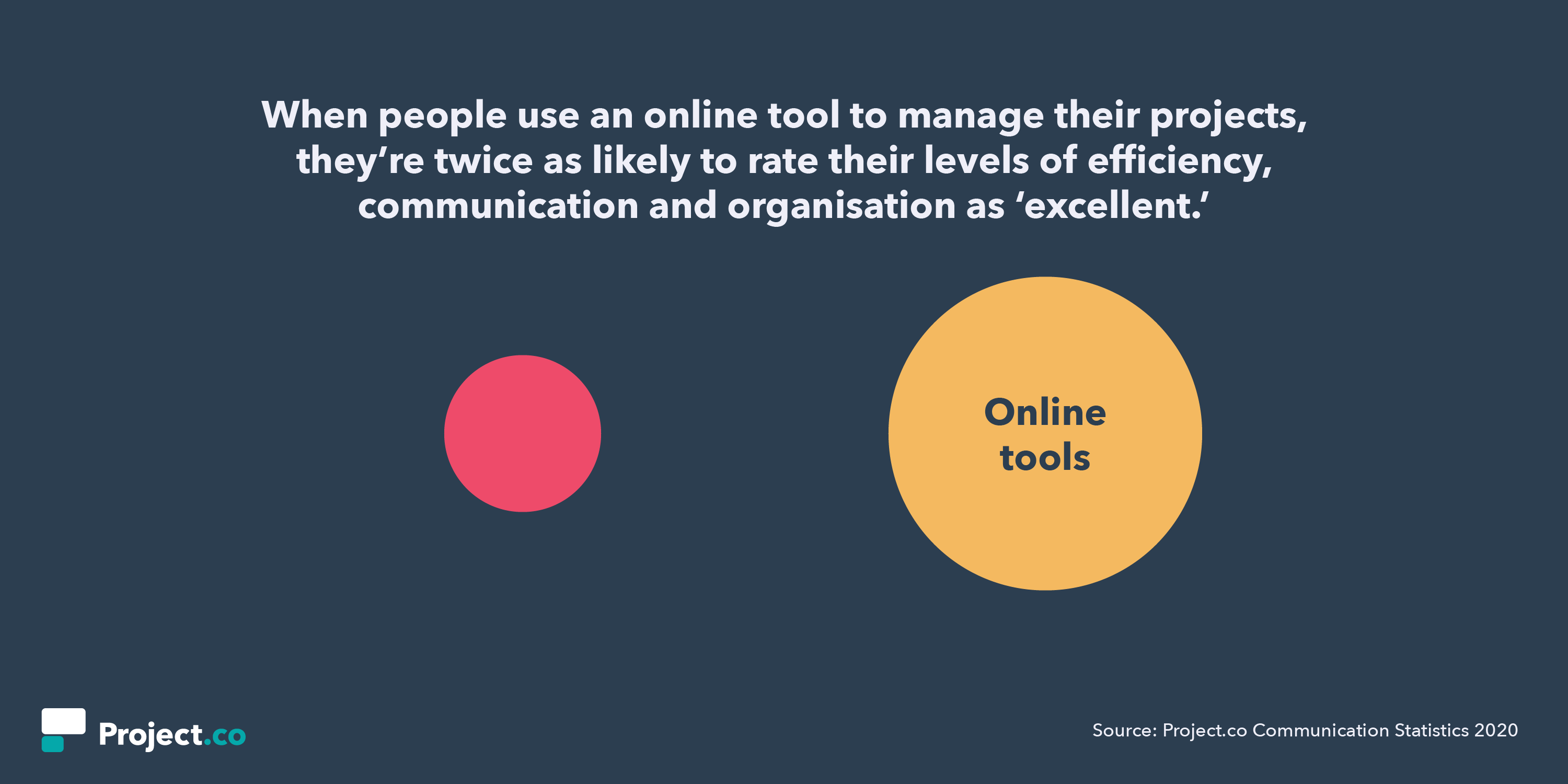Whatever your niche or industry, there can surely be no debate — effective communication is critical to success.
Businesses universally recognize the importance of sharing and documenting information effectively, both internally and with customers.
And yet, counterintuitively, with more technology available than ever before, new data published by Project.co reveals that businesses are struggling as much as ever to effectively communicate.
For instance, while 89% of people believe that effective communication is extremely important, only 17% of people believe their own business’ communication is excellent. (In fact, 8 out of 10 say it’s average or even poor.)

People know the stakes are high here. But still, they can’t get things right. So what gives?
The Changing World of Work
We all know the world of work is changing. Of course, these changes offer incredible benefits — but also considerable challenges.
We’ve seen a huge rise in remote working, for instance, with research suggesting a 91% growth over the last 10 years. This is a total departure from the typical, established workplace, and change — as always — has not been without its bumps in the road.
Many companies have had to take significant steps to facilitate effective communication through the advent of remote and flexible working. But have they gone far enough?
According to Buffer’s State of Remote Work survey (2018) “collaborating/communicating” was cited by 21% of remote workers as their biggest struggle.
Equally, we’ve seen communication shortcomings in businesses that continue to work in on-site offices. Open-plan has become the dominant trend in office design, intended to improve communication — but it’s repeatedly accused of making things worse.
In fact, research has shown that workers in open-plan offices spend 73% less time on face-to-face interactions, with email and instant messaging increasing by over 67%.
What’s clear is that, whether it’s distance, office design or just preference, people are less likely than ever before to actually speak to their co-workers face-to-face.
An over-reliance on email?
This is all backed up by Project.co’s research, which suggests a particular over-reliance on email. When asked how they primarily communicate with their co-workers, 39% of people cited email — the most commonly cited answer by far — compared to online tools (28%), face-to-face interactions (23%), and phone calls (2%).

Email has plenty of benefits, of course. It’s fast, easy, and simple. But when it comes to collaborating and trying to create in-sync teams, it can often make things more confusing and decrease opportunities for spontaneous brainstorming.
Communication inevitably becomes siloed, happening in private inboxes away from the rest of your team and beyond the view of management — which sometimes results in crossed wires, confusion, lost files, and wasted time.
Additionally, never-empty inboxes can be hard to organize. In fact, nearly two-thirds (65%) of people say that, at some point, they’ve lost a file in their own inbox or on a personal hard drive.
There are also continuity issues when people are absent or leave the team, with 63% of people admitting they’ve missed a message or important piece of information that went into a colleague’s inbox while that colleague was away or absent.
And what about the impact on work-life balance?
With increasing access to work emails outside the office, there’s a pervasive sense for many that work never really ends. For many, the temptation — or, worse, requirement — to check email off-hours is eating into family and leisure time, resulting in stress and anxiety.
RescueTime found that over a quarter of work is done outside of regular working hours, during evenings, and on weekends, which can’t be healthy and will lead to burnout for your employees.
Transparency and visibility
With group communication floundering, the first casualty is collaboration.
Project.co found 52% of people say they find it difficult to work out how their individual tasks contribute to their company’s overall goals.
Of course, one solution to demonstrate to employees their work matters is meetings. By holding productive weekly or quarterly standup meetings, individual contributors are able to interact with the larger team to see how their work benefits and improves their team’s workflow.
However, meetings for the sake of meetings can be dangerous.
In fact, research from The Muse who found that as much as 15% of all company time is spent on meetings, which 67% of executives view as failures.
The new Project.co study corroborates this, finding that 61% of people feel they regularly waste time in meetings.
So, now we’ve seen both email and meetings can be hindrances to your employees’ internal communication. But, of course, your employees aren’t the only ones who lose out.
Your Customers Lose Out When Communication is Ineffective
So far we’ve only touched on the internal headaches associated with ineffective communication. But the people who truly lose in this situation are your customers.
When asked about their experiences as customers, an almost unanimous 96% of people believe that the businesses they deal with could improve their communication and project management.
What’s more, around three-quarters told us they’ve stopped dealing with a business because it was too disorganized, and bought from a competitor instead.
The cost of ineffective communication is clearly a heavy one.
But, there’s still good news …
Ok, so if you’re thinking that this has been a pretty grim read so far, you’d be right. But there’s a silver lining behind those clouds.
The good news is that, where technology is applied correctly, it seems to have the power to massively improve communication, organization, productivity, and customer satisfaction.
Project.co found that, when people use an online tool to manage their projects, they’re twice as likely to rate their levels of efficiency, communication and organization as ‘excellent’.
Across every data point, people find it easier to communicate effectively, measure project progress, and keep information organized and accessible when they use an online tool. In fact, people reported communication easier with an online tool over email, meetings, and paper to-do lists.

So, there’s good news and bad news.
The good news — many problems in today’s rapidly-changing world of work can be mitigated and even solved by using an online tool for communication and project management.
The bad news — the problems won’t simply resolve themselves without positive action from business leaders. It takes strong, decisive leadership to identify the need for change, explore to find the right systems, tools and software, and then drive change throughout the organization.
It’s a challenge, but it’s one well worth facing down.
![]()
Original Entry: Businesses Still Can’t Nail Effective Communication [New Data] is shared from https://blog.hubspot.com/marketing/businesses-still-cant-nail-effective-communication via https://blog.hubspot.com/marketing
Check out the original post, Businesses Still Can’t Nail Effective Communication [New Data] that is shared from https://putyourfamilyfirst.wordpress.com/2020/01/09/businesses-still-cant-nail-effective-communication-new-data/ via https://putyourfamilyfirst.wordpress.com
No comments:
Post a Comment